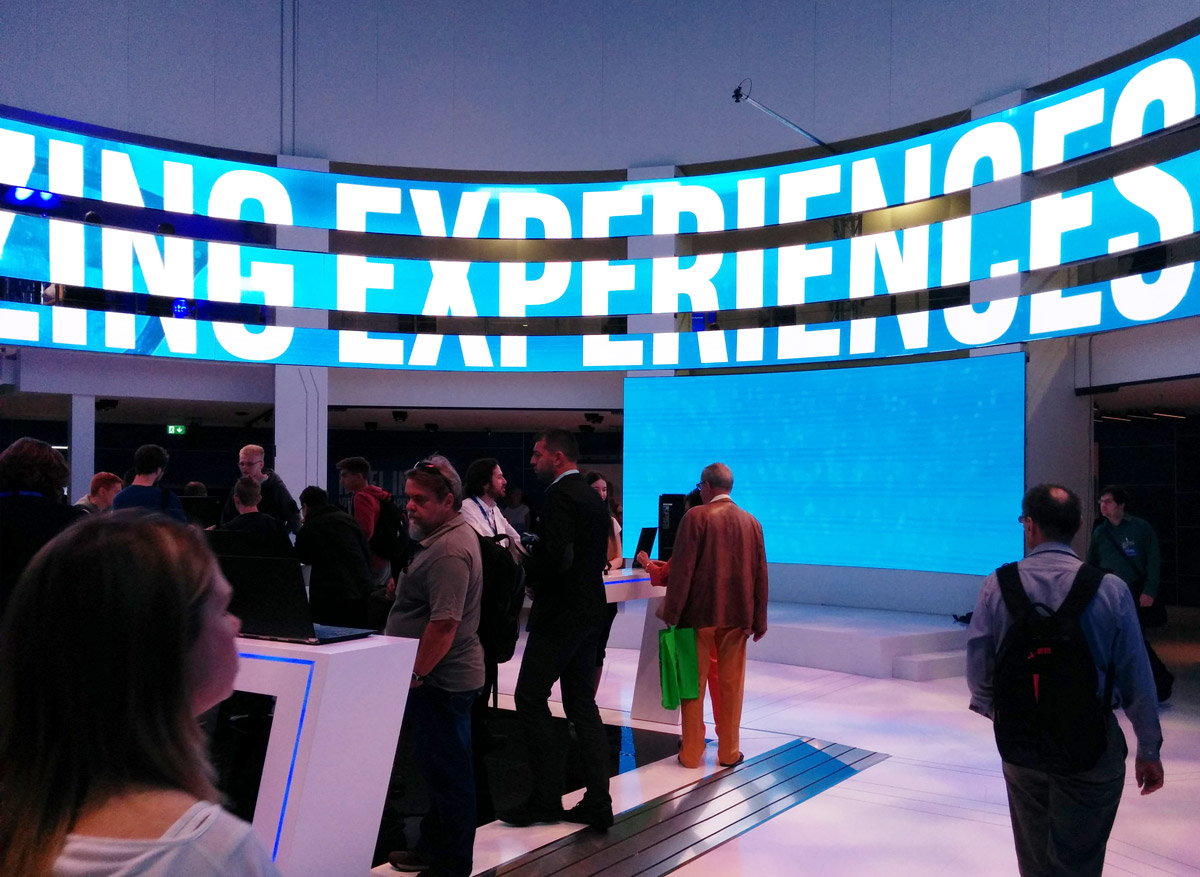‚Poor but sexy‘ used to be the catchphrase to describe Berlin. It shaped the image of the city as being hip, ramshackle and anti-establishment. But a decade down that road, a completely refurbished city is now overcrowded with an impossible mix of new government personnel, global internet hipsters and refugees. Is the party over?
The tectonic plates are shifting in Berlin. Although it isn’t really an evolution, but a revolution. The term ‚reinvention‘ is an understatement for a city that was basically bankrupt twenty years ago, with a public transport system that was still partially cut in two because of the wall, with an economy which was non-existent because the big industry had developed in West Germany, and with unrefurbished houses that were falling apart.
Berlin becoming the German capital again, and with it bringing major refurbishment and new buildings to accommodate thousands of public workers, was a big economic impulse. The other new ifs-blood came from a creative class of digital entrepreneurs and designers, who catapulted the city into being the capital for internet start-ups in Europe. If anywhere on the old continent, the digital economy is being created here, simply because there was no other future.
Two major developments
These developments gave the city a newfound economic stability based on the triangle government-digital services-tourism. It also set in motion rising prices for real estate, which is moving two tectonic plates which are slowly tearing the city apart.
The first is a clash of cultures and social classes. Berlin used to be a vibrant mix of students, Turkish and other immigrants, government workers, pensioners, etc. Now districts such as Mitte and Prenzlauer Berg have become monocultural, reserved for the happy few with good jobs, a happy life and a great family. And no interest whatever to mix with other cultures.
Middle class is being hurt as well
‚Gentrification‘ is not exactly new to Berlin, but it is becoming relevant to more people. The wave of renovation has improved living conditions, but also raised prices so the old inhabitants had to move further away from the center.
It used to mainly be a problem for pensioners and the lower social class. And they could still easily find room somewhere else, though further away. But living room has become so scarce that finding a place is truly becoming difficult, illustrated by the dozens of visitors when a house goes up for rent. And prices are becoming so high that it is starting to hurt the middle-class as well.
Singles like me (and there are a lot of them in Berlin) with a decent income are finding it increasingly difficult to afford an apartment of, let’s say, 60 to 70 square meters. The rent is increasing faster than the wages, and once the vocal middle-class feels as if it is being forced to live outside of the S-Bahn-Ring that surrounds the center, it is becoming precarious.
Living in two different cities
Especially because it is going so fast that there is a very strange division in major parts of the town. It sometimes really feels as if there are two different cities. Walk around Karl Marx Straße in Neukölln and you will see Turkish supermarkets and falafel shops, that have been there for decades.
But the Rixbox is a hipster coffee place, the Prachtwerk a refurbished pub where the freelancing creative class can work, and the Richardstraße has Italian restaurants and delis where the menu is in English. It is a great and eclectic mix, but the problem is that in five years only the latter type of venues will probably still exist.
Violence
Two weeks ago dozens of expensive cars were burnt near Park am Gleisdreieck, where luxury apartments have been built in the last couple of years. Done by anarchists that wanted to protest against gentrification. That is one sign of rising tensions. Another is even more serious: it is about places where the worlds of the poor and the rich clash.
Kottbusser Tor has always been a meeting point for homeless and drug dealers, but the problems seemed to be manageable. Until the last six months, where the influx of sometimes ruthless refugee gangs (yes, a very politically incorrect thing to say) caused violence to at least double. Robberies are now very common, gays have been mugged, and women in my circle of friends tell me they are again avoiding the place in the evening hours.
In those places it really feels like the middle of the zeroes again, when I first came to Berlin and never felt safe at Kottbusser Tor. That feeling of being very cautious is back again. Görlitzer Bahnhof, where African drug dealers are swarming around selling their dope? Same problem. Revaler Straße, where club life and tourists meet to find their party drugs? Ditto. Even on Leopoldplatz in Wedding, a district said to be on its way up, feels sketchy. I was surprised last week to see lots of gangs and dealers on the streets during broad daylight.
Not so sexy anymore
The rising rents (and prices to buy a house) not only move big numbers of people around the city, causing the tensions mentioned above. They also trigger a second development, which is changing the fabric of the city.
Berlin used to be ‚sexy‘ because the streets weren’t occupied exclusively by high-street retailers such as Hennes & Mauritz and MediaMarkt. There were always affordable places for rent (or to squat) for artists to work in, for entrepreneurs to start one of Berlin’s famous 24-hour shops, to start a record store, a cultural centre, or whatever you wanted. Counter-culture thrived, and you could also find it in the heart of the city.
It is what made the capital so unusual, and so attractive for hipsters and tourists alike. The entire techno culture was only possible because there were huge unused buildings everywhere in especially the former East.
Out goes the creative class
This creative class has been completely forced out towards the edge of the city. Where Kunsthaus Tacheles (a huge apartment block squatted by artists) used to be, you can find dozens of art galleries nowadays. The techno clubs are increasingly moving outside the S-Bahn-Ring (Kosmonaut, Sisyphos, Czar Hagestolz, Weyde3 are all places that opened in the last five years).
When you take the train or S-Bahn to Schönefeld airport, you will travel past Schöneweide. The run-down factories along the Spree river are witnesses of a better past, though some have been refurbished into a university of science. The warehouses are now artist workshops, though singer Bryan Adams buying some of those warehouses is a sign of gentrification to come. And this is 10 kilometer away from Alexanderplatz, mind you.
Counter-culture disappears
Why is it bad? Because it sucks the creativity and life out of the centre of the city. Counter-culture has been one of the defining qualities of Berlin in over a century. Now the city is strangling itself, pushing those creative people to the edge of town.
Here you also get the increasing feeling of two different cities. In Mitte is the polished version, for tourists and happy young families. The Hackesche Höfe are ‚so cute and alternative‘, a maze of courtyards that only create an illusion of creativity though: it’s one of many tourist traps.
And then there are still truly vibrant places, though they are becoming ever more rare. Places that still feel ramshackle and mix up great club nights with alternative cinema, street markets and fundraising events for refugees.
Make a difference
Well done, great analysis, thank you. But what’s next? Difficult question, because I think it s quite lazy for civilians to point to authorities to solve the problems. And I do think civilians can make a difference: simply showing that we are aware of these tensions and are sensitive towards remaining an open and multicultural society in everyday life are already a great first step.
During lunch breaks we tend to visit a plethora of restaurants with origins all over the world. It is one of the great things of Berlin, so why not? But when you move to a new district and force out the pub around the corner because it might be a bit too loud is NOT the way to move forward and stimulate a vibrant society.
The main driver of the problems though cannot be solved by civilians. There is an inequilibrium in the housing market, where real estate developers are realizing disproportionally many expensive apartments, instead of social housing. There is also hardly any protection for the creative class to stay and thrive. Those two things can be corrected by the government. If not, the tectonic plates will continue to move and rip the city further apart.





